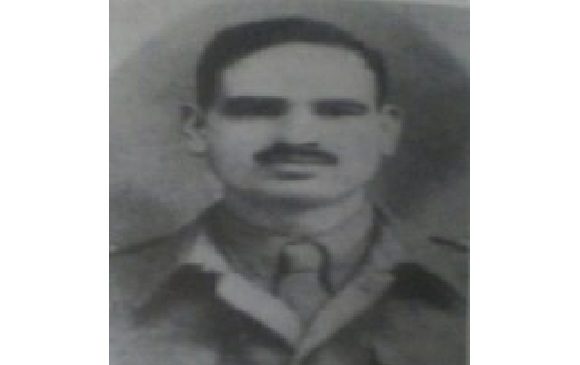
Service No : IO-11481
Date of Birth : November 26, 1910
Place of birth : Una Dist (HP)
Service : Army
Last Rank : Subedar
Unit : 2 Punjab
Arm/Regt : The Punjab Regiment
Operation : Indo-Pak War 1947-48
Awards : Vir Chakra
Martyrdom : October 24, 1948
Subedar Raghunath Singh VrC
Subedar Raghunath Singh hailed from Badhmana, a small but proud village in the Una District of Himachal Pradesh. He was born on 26 November 1910 into a humble family to Shri Mall Singh. Growing up in a rural environment that valued hard work, honesty, and perseverance, he developed a strong moral compass and an unshakeable resolve to lead a life of purpose. During his formative years, he was profoundly inspired by the courage and sacrifice of the soldiers who served in the Indian Armed Forces. Their tales of heroism and service to the motherland stirred in him a deep desire to contribute to the nation’s defence. It was this admiration that gradually evolved into a lifelong dream—to don the uniform and serve with honour.
With single-minded dedication, he worked tirelessly to realize this ambition. His perseverance eventually paid off when he was selected to join the Indian Army. He was recruited into the 2 Punjab Battalion of the Punjab Regiment, one of the oldest and most distinguished infantry regiments of the Indian Army. The regiment had a storied legacy of valour, loyalty, and sacrifice, and it was within this proud lineage that he honed his soldierly skills and leadership qualities. Throughout his military career, Subedar Raghunath Singh exemplified the finest traditions of the Indian Army. To his subordinates, he was a source of strength and inspiration; to his superiors, he was a dependable and fearless leader who led by example. After independence and partition in 1947, the airborne forces of undivided India were reorganized between India and Pakistan. India retained the Divisional Headquarters and restructured its airborne elements to form new brigades and battalions. Subedar Raghunath Singh was attached to 1 Parachute Battalion, which was part of the 50th Parachute Brigade — a formation known for its high standards of training, courage, and operational excellence. This brigade played a crucial role in the early post-independence operations, upholding the proud legacy of India’s airborne forces.
1947-48 Indo-Pak War: Oct 1948
1 Para (Punjab) formed part of the first Indian Army formation to move to J&K in October 1947, when the ‘raiders’ attacked, taking over the defence of Srinagar airfield. The unit played a stellar role during the epic siege of Poonch in 1947, alongside the troops of the Dogra Regiment, 17 Mountain Battery, and 7 Cavalry. Thereafter, the unit continued to undertake various operations along with other units as part of ongoing Indian Army operations against enemy forces. During Jun 1948, too, Sub Raghunath Singh's unit was deployed in J&K and was engaged in operations against the Pak forces. On the night of 14 October 1948, during operations in Jammu & Kashmir, a column of Indian troops was advancing towards Pir Badesar when it came under intense enemy fire from well-prepared positions near Giran. The accuracy and volume of the enemy’s fire temporarily halted the advance. It was then decided to launch a dawn attack to dislodge the enemy and continue the forward movement. In this crucial operation, Subedar Raghunath Singh was commanding the leading platoon of the attacking force. As the assault commenced at first light, his platoon came under heavy enemy fire. Displaying exemplary courage and leadership, Subedar Raghunath Singh continued to press forward, urging his men to maintain momentum despite the hail of bullets.
In the midst of the attack, he was hit by enemy fire, causing the advance to slow momentarily. Undeterred by his grievous wounds, he rose to his feet and, with unwavering determination, ordered his men to keep advancing and capture the objective, telling them not to worry about him. His words, spoken with calm authority even in the face of death, reignited the fighting spirit of his men. Though he collapsed again after taking a few more steps, he refused to be evacuated until the platoon had secured its objective. Inspired by his fearless example and devotion to duty, his men charged ahead with renewed vigour and successfully captured the enemy position. Subedar Raghunath Singh’s wounds proved fatal, and he succumbed to his injuries on 24 October 1948. His complete disregard for personal safety, unflinching devotion to duty, and indomitable courage in the face of certain death were an inspiration to all ranks and upheld the highest traditions of the Indian Army. Subedar Raghunath Singh was given the gallantry award, “Vir Chakra” for his commendable bravery, devotion to duty and supreme sacrifice.
Sub Raghunath Singh is survived by his wife, Smt Rattan Devi.

No Comments